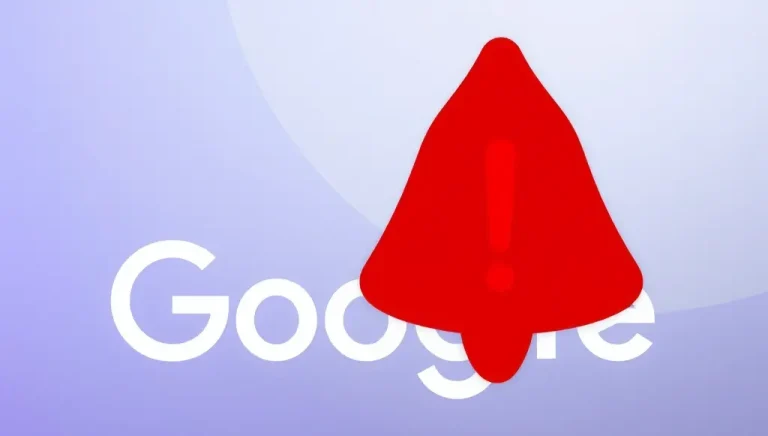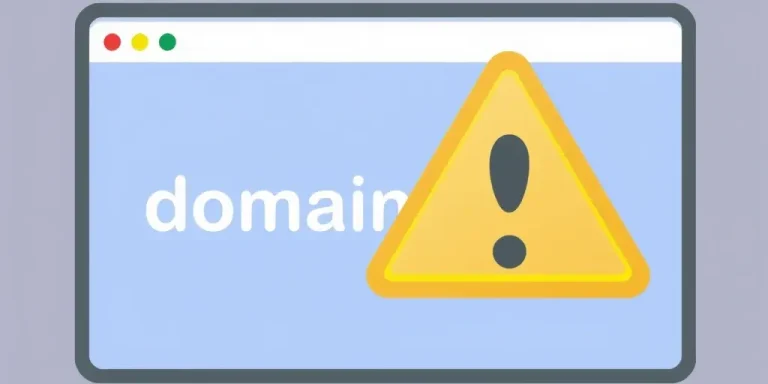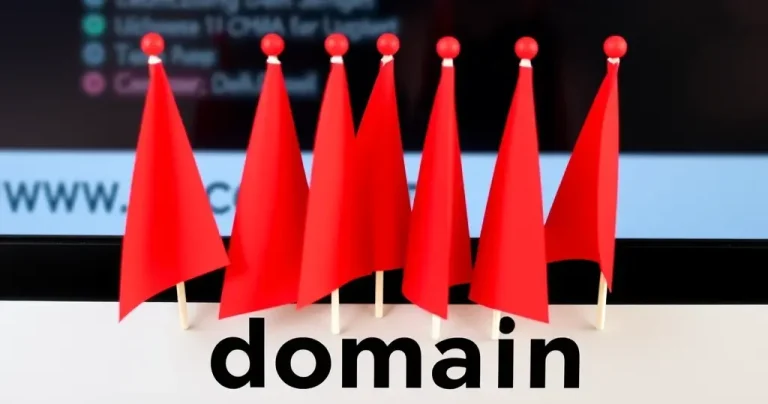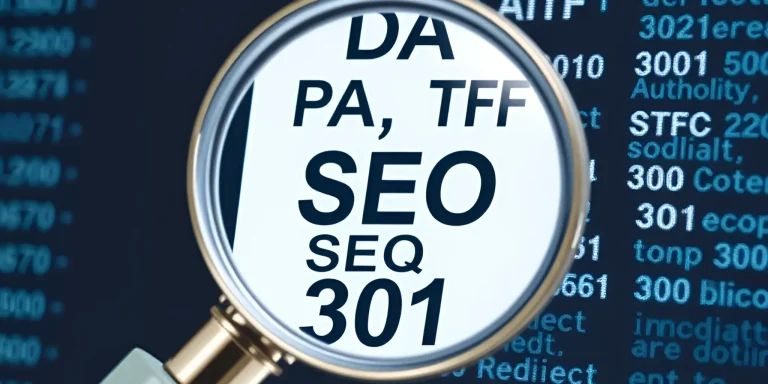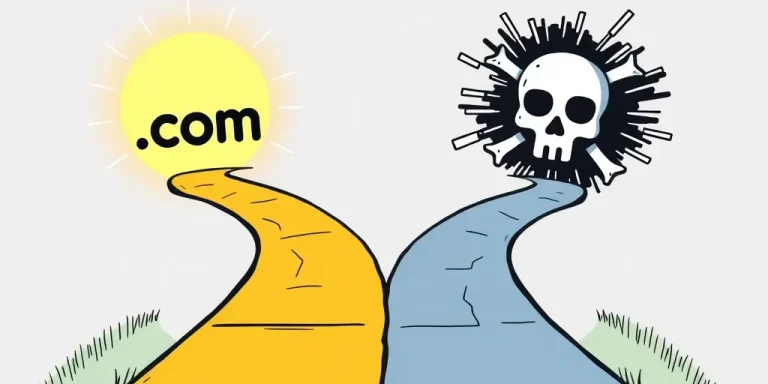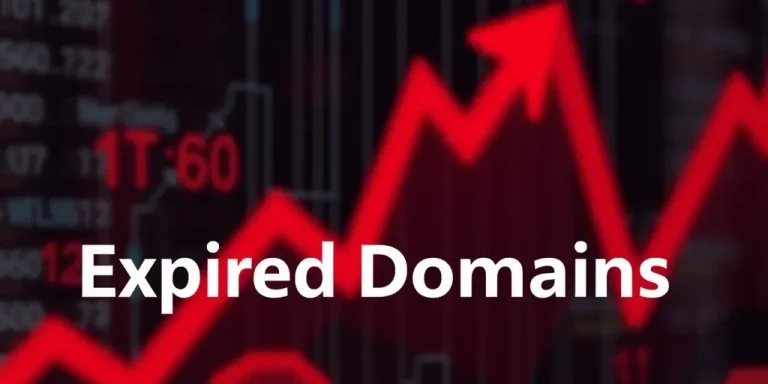The Ultimate Guide to Expired Domains: Everything You Need to Know
Ever wonder what happens to domain names when they’re no longer renewed? Millions expire every year, fading back into the digital ether. But hidden amongst them are potential goldmines – domains packed with history, SEO power, and even existing traffic, just waiting to be rediscovered.
Navigating the world of expired domains, however, can feel like exploring a complex maze. What are they really? How do you find the good ones? And what are the risks involved?
If you’re asking these questions, you’ve come to the right place. This guide is your definitive resource for understanding the A-to-Z of expired domains. We’ll break down what they are, how the expiration process works, why they can be incredibly valuable, and the crucial factors to consider before you dive in. Understanding expired domains is the first step towards leveraging them for high-value resale, jumpstarting new website projects, or supercharging your existing site’s SEO.
Let’s unlock the potential hidden in the domain name graveyard.
What Exactly IS an Expired Domain? Back to Basics
Simply put, an expired domain is a domain name that was previously registered by someone but was not renewed by its owner before the official expiration date. After failing renewal through various grace periods, it eventually becomes available for registration again.
Check out our Essential Glossary of Expired Domain Terminology!
The key difference between an expired domain and a brand new, never-before-used domain lies in its history. An expired domain might come with:
- Existing Backlinks: Links from other websites pointing to it.
- Domain Authority: A score predicting its ranking potential based on its link profile.
- Age: A history of registration and potentially past content.
- Possible Traffic: Lingering visitors who knew the old site or follow old links.
Think of it like finding a vacant storefront in a prime location that already has some foot traffic and recognition, versus building a brand new shop on an undeveloped plot of land. Both have potential, but one offers a significant head start.
The Domain Name Lifecycle: A Journey from Registration to Deletion
Understanding how a domain goes from active to available is crucial for knowing when and how you might acquire one. The process generally follows these stages (though timings can vary slightly between registrars):
Active Registration
This is the standard period when a domain is owned, paid for, and typically pointing to a live website or service. Registrations usually last 1-10 years.
Expiration Date
The day the registration officially ends if not renewed beforehand.
Expiry Grace Period (Registrar Hold)
- Duration: Often 0-45 days post-expiration.
- What Happens: The domain usually stops resolving (website and email go down). The original owner can typically renew the domain during this time, often at the standard renewal price. The registrar places a temporary hold.
- Dive deeper into Grace Periods and Registrar Holds
Redemption Grace Period (RGP)
- Duration: Typically around 30 days following the expiry grace period.
- What Happens: The domain is fully deactivated. The original owner might still be able to reclaim it, but it comes at a significantly higher cost – a redemption fee (often
80−80−200+) plus the standard renewal fee. It’s a last chance saloon for the previous owner.
Pending Delete Status
- Duration: A short window, usually about 5 days.
- What Happens: The domain is locked. It cannot be renewed or redeemed by the original owner anymore. It’s queued for deletion by the central registry. This is the stage where domain backordering services (“drop catchers”) prepare to snatch the domain the moment it becomes available.
Deletion / “Dropping”
- What Happens: The registry officially deletes the domain record. It’s released back into the pool of available domains. At this precise moment, it can be registered by anyone on a first-come, first-served basis for the standard registration fee… unless a backordering service successfully catches it.
Why Do Good Domains Expire Anyway?
It’s easy to assume a domain only expires if the underlying business failed or the domain itself wasn’t valuable. While that’s sometimes true, many perfectly good domains expire for mundane reasons:
- Business Closure/Pivot: The company shuts down or changes direction entirely.
- Project Abandonment: A side project, blog, or startup idea fizzles out.
- Simple Oversight: Expired credit cards, missed renewal emails (spam filters!), staff changes leading to lost responsibility.
- Financial Issues: Temporary cash flow problems prevent renewal.
- Technical Glitches: Problems with the registrar or renewal process.
- Intentional Non-Renewal: A strategic decision to rebrand or consolidate web properties.
Don’t assume an expired domain is worthless – investigate its potential!
Not All Expired Domains Are Created Equal: Types & Acquisition Methods
How an expired domain becomes available affects how you acquire it and often its potential quality:
- Dropped / Hand-Registered Expired Domains: These have gone through the entire lifecycle and are available for anyone to register at the standard price (like registering a brand new domain). The challenge? High-value dropped domains are often snapped up instantly by automated systems (backorders). Finding gems manually requires tenacity, luck, and timing.
- Auction Expired Domains: Many valuable domains are caught by registrars (like GoDaddy) or specialized auction platforms (NameJet, SnapNames) before or as they drop. These are then sold to the highest bidder. Auctions often feature higher-quality domains but require bidding against others.
- Backorder Expired Domains: You use a “drop catching” service to attempt registering a specific domain the instant it’s deleted by the registry (after Pending Delete). You place a request (a backorder) beforehand. If only you backorder it, you get it (often for a fee higher than standard registration). If multiple people backorder the same domain, it usually goes to a private auction between those bidders.
Decoding the Data: Key Terminology & Metrics for Evaluation
Okay, you’ve found an interesting expired domain. How do you assess its actual value and potential risks? You need to look at the data. Here are the key terms and metrics:
- Domain Authority (DA) & Page Authority (PA): Developed by Moz, these scores (0-100) predict a website’s ranking potential on search engines based on its backlink profile. Higher scores are generally better, but treat them as relative indicators, not absolute truths.
- Trust Flow (TF) & Citation Flow (CF): Developed by Majestic, these metrics (0-100) help gauge link quality vs. quantity. Citation Flow measures link volume, while Trust Flow measures link quality based on proximity to known “seed” sites. A high TF relative to CF is often a good sign.
- Backlinks: These are the incoming links from other websites. Crucially, quality trumps quantity. A few strong, relevant links are far better than thousands of spammy ones. Analyze where the links come from.
- Referring Domains: The number of unique websites linking to the domain. A higher number generally indicates broader recognition.
- Domain Age: The date the domain was first registered. Older domains can sometimes carry more weight, but age alone isn’t a guarantee of quality. Consistent, positive history matters more.
- Website History (Archive.org / Wayback Machine): Essential! Check the Internet Archive’s Wayback Machine to see what kind of website(s) existed on the domain previously. Was it relevant to your niche? Was it spammy? Was it parked?
- Spam Score: Metrics (like Moz’s Spam Score) attempt to quantify the risk of a domain being penalized based on the characteristics of its link profile or past usage. Investigate high scores carefully.
- Google Index Status: Check if pages from the domain are still listed in Google’s index (site:domain.com search). If it’s completely de-indexed, it might signal past penalties.
- Topical Relevance: How closely does the domain’s name, history, and backlink profile align with how you intend to use it? High relevance is key for leveraging its authority effectively.
Warning Signs: The Inherent Risks of Buying Expired Domains
It’s not all sunshine and SEO boosts. Buying expired domains carries risks you MUST be aware of:
- Spammy History / Toxic Backlinks: The previous owner might have used shady SEO tactics, leaving behind a trail of low-quality or manipulative links that could harm your project.
- Google Penalties: The domain might have an active manual penalty from Google or be suffering from an algorithmic devaluation due to its past. Lifting penalties can be difficult or impossible.
- Trademark Infringement: The domain name itself might be trademarked by another company. Using it could lead to legal trouble. Always perform basic trademark checks.
- Bad Reputation: The domain might have been associated with scams, malware, illegal activities, or undesirable niches (adult, gambling etc.), potentially tainting your brand.
- Low Quality / Irrelevant History: Even without penalties, if the domain’s past use and links are completely unrelated to your intended niche, the inherited authority might be minimal or useless.
- Drop in Metrics: Sometimes, metrics like DA/TF can decrease after acquisition if the old site structure isn’t handled correctly or if key linking pages are lost.
Due diligence is non-negotiable when dealing with expired domains.
The Big Payoff: Why You Should Care About Expired Domains
Despite the risks, the potential rewards make understanding expired domains incredibly valuable. When chosen carefully, they offer significant advantages:
- High Resale Value: Domains with strong metrics, good history, and brandable names can be flipped for substantial profit.
- Dive deeper into Flipping Expired Domains for Profit.
- Perfect for New Projects: Launching a new website or blog on an expired domain gives you an immediate SEO head start thanks to existing authority and backlinks – something a brand new domain takes months or years to build.
- Dive deeper into Building on Expired Domains.
- Boost Existing Sites: Acquiring a relevant expired domain and using a 301 redirect to point it to your main website can pass along its “link juice” and authority, potentially boosting your rankings and traffic.
- Dive deeper into Using Expired Domain 301 Redirects Effectively for SEO.
The common thread? Finding the right domain is paramount. This requires knowledge (which you’re gaining right now!) and efficient searching and filtering.
Where to Start Your Search
Finding quality expired domains can feel like searching for needles in a digital haystack. Manually checking registries, monitoring upcoming drops, and sifting through auction lists is incredibly time-consuming.
While there are marketplaces (GoDaddy Auctions, Sedo), drop-catching services (NameJet, SnapNames, DropCatch), and large databases (ExpiredDomains.net, DomCop, Spamzilla) you can use, navigating them effectively takes time, practice, and significant effort.
This is where curated lists become invaluable. Instead of spending hours filtering through thousands of low-quality or irrelevant domains, imagine getting a daily email highlighting pre-vetted, high-potential expired domains based on the key metrics we’ve discussed. It saves you time and dramatically increases your chances of finding those hidden gems.
Tired of the endless search? Get high-potential, freshly expired domains with strong SEO metrics delivered straight to your inbox daily. Stop searching, start finding. Join the NameScores List!
Conclusion: Your Journey into Expired Domains Begins Now
Expired domains represent a fascinating and potentially lucrative corner of the internet. They offer shortcuts to SEO authority, profitable flipping opportunities, and powerful ways to boost existing projects.
You now understand the domain lifecycle, the different types of expired domains, the key metrics used for evaluation, and the critical risks to avoid. This knowledge is your foundation for making informed decisions.
Remember, the true value lies not just in finding any expired domain, but in finding the right one for your specific goals. Careful research and due diligence are key.
Ready to dive deeper? Explore our specific guides linked throughout this article for more detailed strategies on flipping, building, and redirecting expired domains. Or, take the shortcut and start receiving hand-picked opportunities today.
Sign up for our daily expired domain list and let the gems come to you!
